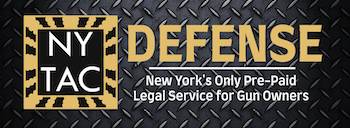Representation.
Don’t Run From the Police on Your Motorcycle (or any Other Motor Vehicle)
New York Traffic Lawyers generally advise that you never attempt to flee from the police. Hypothetically, consider this situation: you are on the highway speeding down the road with your friends on your sports bike and you see blue and red lights behind you. You see police in your rear view mirror. You need to make a split second decision, you don’t have a class M motorcycle endorsement, your plate is bent under your fender, you don’t have legal turn signals, and you have a loud exhaust. You know that you will get ticketed if you pull over. You need to pay your bills and don’t have time to go to traffic court. Your bike can easily do over 150 miles per hour. The police would not be able to catch you if you ran. You’ve beat them before. The cops can’t stop what the cops can’t catch right?
If you have been charged with Unlawful fleeing a police officer in a motor vehicle in the first, second, or third degree, call our experienced New York criminal attorneys today.
This line of thinking may be appealing to some, but, running from the police on a motorcycle can have dire consequences. First, the police may very well use force to stop your motorcycle and there may be no way for you or your family to recover from the police for causing your injuries. Second, there are serious criminal consequences for fleeing the police, especially if someone is injured or killed. Running from the police is never a smart choice, but, running on a bike is especially dangerous considering the enhanced vulnerability of having no cage around yourself, and enhanced risks from imperfect road conditions.
The leading case on running from the police is Scott v. Harris. The issue of Scott was whether or not the police have a right to use deadly force to terminate a police chase where the fleeing vehicle is driving in a manner that endangers the lives of others. Harris was spotted by the police driving 73 miles per hour in 50 mile per hour zone. The police put their lights on and Harris fled. Eventually, Harris pulled into a supermarket parking lot and appeared to surrender. As the police began to surround the parking lot, Harris jumped a curb and fled again. Harris drove at speeds faster than 85 miles per hour some very narrow highways.
The police decided it was time to end the chase. Officer Scott radioed his supervisor and asked for permission to employ a PIT (precision intervention technique) technique to stop Harris’ car. A PIT technique involves bumping a fleeing car’s rear bumper and causing the fleeing car to lose traction and spin out. The PIT technique caused Harris’ car to veer off the road, crash, and flip. Harris became a quadriplegic.
The late Justice Scalia reasoned that because Harris endangered the lives of others Officer Scott was justified in executing the PIT technique on Harris’s car. Harris’ and his family could not recover anything from Officer Scott or the police for causing Harris’s injuries. If you are interested, you can watch a video of the police chase here:
Harris was only driving at 85 miles per hour. Although 85 miles per hour is reasonably fast, many sports bikes, particularly of the 1000cc and higher class have performance capabilities of greater than 170 miles per hour without any modification what so ever. When running from the police, people on these bikes often ride as fast as possible and execute extreme maneuvers like splitting cars or riding on the shoulder to evade the police. Should the police terminate such a chase with deadly force, like spike strips, a PIT technique, or shooting the rear tire of the motorcycle out with a shotgun, it would be an uphill fight in court to recover for such an injury.
Running from the police is also crime in New York. Should a person die due to you fleeing the police you may be charged with Penal Law 270.35, Unlawful fleeing a police officer in a motor vehicle in the first degree, which is a class D felony, with a maximum penalty of 7 years in prison, along with many other charges like vehicular manslaughter, reckless endangerment, and a variety of traffic offenses. As such, it is never advisable to flee from the police on a motorcycle. If you have fled from the police on a motorcycle and are facing criminal charges and serious injuries, please call our experienced New York motorcycle attorneys for a free consultation. We may be able to help.

















